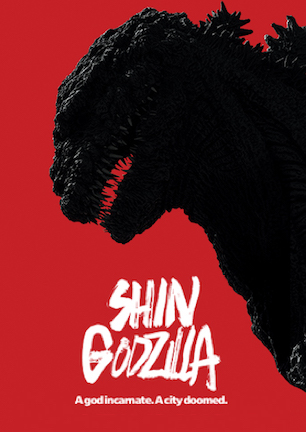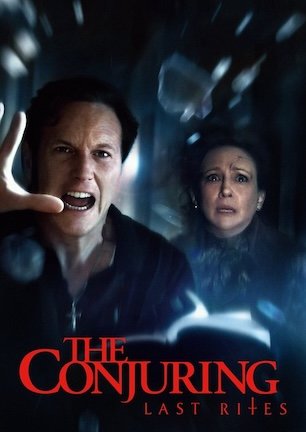Studio: Toho
Director: Hideaki Anno, Shinji Higuchi
Writer: Hideaki Anno
Producer: Minami Ichikawa, Taichi Ueda, Yoshihiro Sato, Masaya Shibusawa, Kazutoshi Wadakura
Stars: Hiroki Hasegawa, Yutaka Takenouchi, Satomi Ishihara, Ren Osugi, Akira Emoto, Kengo Kora, Mikako Ichikawa, Jun Kunimura, Pierre Taki
Review Score:
Summary:
The Japanese government mobilizes to protect Tokyo when an unstoppable radioactive creature begins destroying the city.
Review:
Like many from my generation, my indoctrination to the world of Godzilla came courtesy of Saturday afternoon syndication. In 1980s Cleveland specifically, it was Superhost’s block of Three Stooges shorts followed by a double feature that regularly included Toho’s kaiju classics.
Those were halcyon days of wide-eyed wonder, sitting cross-legged with a bowl of Count Chocula, spellbound by the campy action of men in rubber suits wrestling over cardboard cityscapes. There was an indefinable magic to the imaginative weirdness of fairy twins, three-headed dragons, mechanized monsters, and being too young to care about the corniness of iffy English dubbing or overzealous acting.
I understand and support the essential need of a venerable series to undergo evolution, particularly one dating back as far as 1954. But in recalling how memorably entertaining those exciting experiences were growing up, I wonder how fast I would have changed channels had the dourly dull “Shin Godzilla” been broadcast in place of “Godzilla vs. Monster Zero,” preventing me from ever becoming fascinated with Godzilla at all.
Because it is a reboot, everyone in “Shin Godzilla” is encountering the titular creature for the first time. This means Godzilla has now risen from Tokyo Bay to astonished looks from the Japanese populace almost as many times as Thomas and Martha Wayne have been gunned down in Crime Alley.
As with Batman, Spider-Man, or any decades-old creation, the challenge with retelling an origin story for the umpteenth time is that much of the movie is spent catching up the characters to what the audience already knows. When an undersea anomaly ruptures Tokyo’s Aqua-Line and floods the city in the film’s first scene, we know off the bat it is Godzilla. Yet government officials still have an eight-minute debate about whether an unidentified creature could possibly be considered a cause.
Caring little for the common complaint that Gareth Edwards’ 2014 “Godzilla” didn’t feature enough of the main monster, “Shin Godzilla” commits a similar sin. After slithering through a swath of destruction in a not-yet-fully-mutated form, Godzilla retreats to the sea and disappears for twenty minutes. Tuckered out from a mid-movie energy expenditure, Godzilla later goes into sudden hibernation. The creature stands still like a statue for another half hour until the master plan to bring down Big G finally wakes him for the finale.
All of this inactivity on Godzilla’s part leaves “Shin Godzilla” to become the monster movie equivalent of C-SPAN. The prime minister’s cabinet of suited politicians sits in chairs looking at paper stacks while discussing response efforts. Academics type on their laptops, pore over maps, and thumb through manila folders as they crack into the creature’s biology. For nearly 120 minutes, repetitive scenes of consternated conversations, conference calls, and pointing at computer screens operate at an energy level equivalent to a PBS science special.
When Godzilla does go on a tear, his destructive rampages are among the most visually impressive of the entire Toho series. Spectacular effects are most definitely in play. But the meat of the movie lies in areas that never would have captivated me as a child, and barely hold my engagement as an adult.
“Shin Godzilla” is a disaster drama, not a monster movie, and that’s an important distinction. Godzilla is an interchangeable threat. He may as well be a sentient tidal wave or rolling fog with the power to topple towers. The plot’s emphasis is on how humans react to this danger, and how they interact to arrive at a solution.
Which would be a wonderful approach to generating emotional tethers and heart-wrenching subplots if the story weren’t hung up on bland matters of international diplomacy and radioactivity-related research. Save a scattered shot of a breadline or someone in a surgical mask, we only see the general population when they are running, panicking, or otherwise reacting in fright. There isn’t a true sense of the human damage of losing homes, loved ones, and livelihoods. It’s a hollow depiction of devastation in need of personalization that doesn’t stem solely from a deputy minister’s internal tussle with reconciling bureaucracy.
“Shin Godzilla” causes me to consider that “Godzilla” 2014 (review here) was far better constructed than I gave it credit for. Gareth Edwards’ vision didn’t have much by way of giant monsters, but it did have substantial character drama that tied into themes of family, sacrifice, and interpersonal connections.
The Godzilla in that film also had a definable personality by way of how the creature was integral to a specifically dynamic conflict. Here, Godzilla serves no narrative purpose other than being a sponge for artillery fire. He does his characteristic bark a few times, disappears, sits still, and stands in as a lump to motivate the human characters’ conversations.
Its awards and accolades conditioned me to expect that “Shin Godzilla” would be a triumphant return for the creature’s Japanese incarnation. In my disappointment, I don’t have the heart to dunk the film’s review score into the red, even though I’d rank it underneath “Godzilla” 2014 according to personal preference.
Forced to choose one to watch a second time, I’d pick the Edwards film. While “Godzilla” 2014 may not be a seminal Godzilla movie, at least it is thoughtfully plotted as a cinematic story. The thought of sitting sullenly through “Shin Godzilla” again only makes the kid in me sigh.
NOTE: The film’s Japanese title is “Shin Gojira.” The alternate English title is “Godzilla Resurgence.”
Review Score: 50






Although it leaps off a compelling springboard, “The Carpenter’s Son” lands in a shallow pool in search of more commanding material.